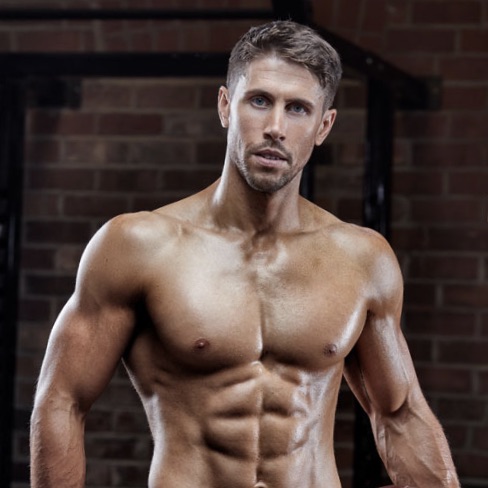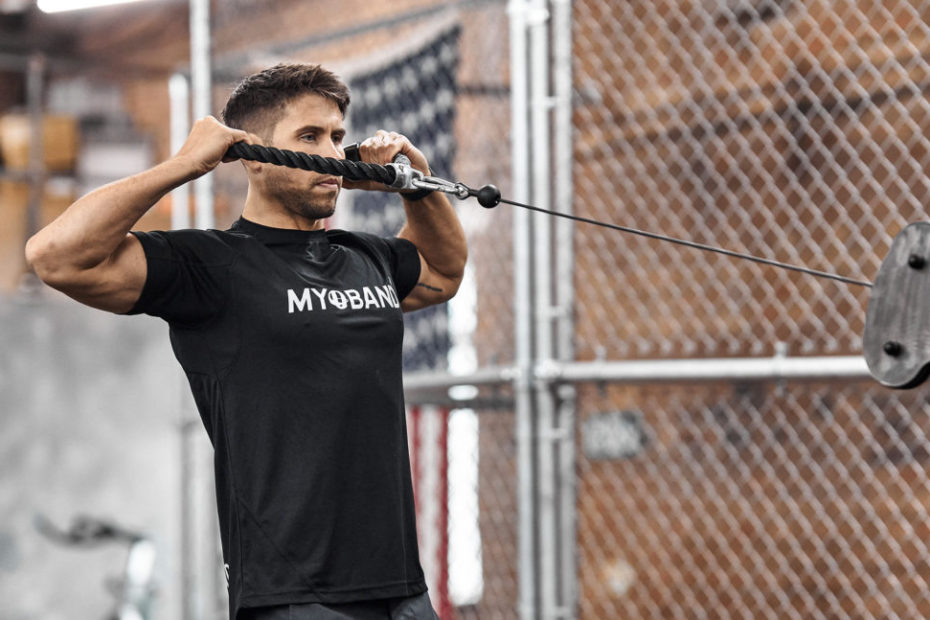Face pulls are the #1 exercise you should be adding to your programming right now to develop stronger and healthier shoulders. In fact, you can use them nearly every day of the week if you really wanted to. Some of my clients have felt the benefits when programming face pulls in this exact way.
If you want proof try just a few sets of heavy face pulls at the start of every workout this week and see how you get on – guaranteed this time next week your shoulders would never have felt so great! Here are 10 face pull variations you can start using right way.
But first, here’s why cable position matters…
One of the most common questions about face pulls is how high the cable should be in relation to your shoulders. Another important question is where you should pull towards.
For most I recommend setting up a cable (or band) in a position so the pull is parallel to the ground. For example if you pull the cable towards your nose then I’d recommend setting the cable off the floor at a similar height. You don’t have to set it here though, as changing the direction of the cable can influence what goes on at the shoulder complex.
Downward versus upward angle
Pulling so the cable has more of a downward angle will create a downward rotation moment at the shoulder, and depression of the shoulder complex as a whole. In essence you’ll activate more muscle south of your scapula.
On the other hand pulling so the cable has more of an upward angle will have the opposite effect in creating an upward rotation moment. This would result in more scapula elevation, upper trap and medial delt activation.
Take the cable too far down and you’ve got yourself an upright row, which at the extreme represents how a change in cable angle can alter muscle activation and shoulder mechanics. Off the subject a little, upright rows are not in the same league as face pulls when it comes to shoulder health though. Maybe we can chat about that another time.
While the name of the exercise makes things pretty clear (i.e., you should be pulling to your face), pulling towards your forehead versus your chin can have a different feel to it, regardless of cable height.
While pulling towards your forehead will result in more input from your shoulder external rotators (largely infraspinatus), pulling lower towards your chin would likely result in more posterior deltoid, traps and rhomboids activation. The majority of the time I cue “elbows out, thumbs to ears” as a starting point, and to cover all bases.
Top 10 face pulls
Here I give you some face pulls I feel suit a bunch of different scenarios. I’ve given a short explanation as to why you might pick one variation over another.
#1 – Face Pulls with Hammer Grip
When it comes to rope face pulls you have two main grips to choose from. One where your thumbs will face towards you as you pull inward, and another where your thumbs will face more inward towards each other.
Choosing a hammer grip with thumbs facing towards you will allow for more range of motion at the shoulder. I tend to program this grip when trying to “cheat” a little more external rotation at end-range.
You won’t be able to handle as much weight with this grip, but if your shoulder external rotation is lacking this will help you get some additional activation.
#2 – Face Pulls with Palms-down Grip
Using a palms-down grip where your thumbs are facing more inward might limit shoulder range in some, but biases resisting shoulder internal rotation since your grip wants to rotate inward. I tend to program this for those with acceptable shoulder range of motion as it’s also conducive to lifting more weight.
#3 – Cable Shoulder Un-messer-Upper
As a way to get more shoulder volume and a good hypertrophy stimulus this is a creative series of exercises. It acts as a form of mechanical drop set where you go from hardest to easiest exercise, finishing with a cross-cable face pull. Watch this at the end of the video, it’s a good example of a face pull using a low cable position.
#4 – 1-arm Face Pulls
With a single-arm face pull you get an additional anti-rotation and core component to the exercise. It also allows you to focus more on one arm at a time and potentially even out some muscle imbalances. I rarely program this to be honest, but it’s a good tool to have when you need it.
#5 – Face Pulls with Dual-ropes
All you need to do with this is steal two ropes, slide the attachment to one end and clip it to the cable. With dual-ropes you get more free range of motion and a wider pull if you want to. It’s better if you have broader shoulders and clavicle width. It’s also better if you have some mobility restrictions and more cranky shoulders
#6 – Seated Face Pulls
I use a seated version a fair amount of the time. I feel it’s a good position to learn in, and teach correct positioning. The biggest technique flaw I see with face pulls are the horrible-looking rib flare when someones going too heavy, or can’t control it.
Seated face pulls help you become more aware of the ribs and pelvis, and keeping that space “closed”.
#7 – Bodyweight Face Pulls (a.k.a., Aussie Rows)
Aussie rows are a pretty advanced way to perform face pulls. First off they require you being able to lift a large majority of your own body weight, and second there’s a lot to think about when doing them.
If you’ve nailed the basics then these are a good way to mix it up. Go with a bent-knee position to make it a little easier.
#8 – Band Face Pull-Apart
Band face pulls are good for a warm-up or high repetition sets. I would argue however that the resistance profile of a strength band doesn’t match the strength profile of the exercise – the band gets stronger as you go in to your weakest range of motion. So I wouldn’t use these all of the time.
Combining face pulls with a pull-apart is a nice way to get some additional shoulder activation though. If you want your shoulders to feel fried then try these.
#9 – Half-kneeling Face Pulls
A half-kneeling position helps with core engagement and control. It also helps simultaneously develop lumbo-pelvic hip, knee and foot Stability.
Although the focus is a little away from your upper body, it’s a great way to open out and warm up your hips. I like these to improve positioning before bench pressing.
#10 – Chest Supported Face Pulls
More support from a bench means more output from your target area. By going chest-supported you’ll likely get more activation from your entire shoulder complex.
Once you get locked in position you’ll find not a lot gets in the way, and failure is largely down to the shoulder complex rather than fatigue elsewhere. For hypertrophy purposes these are one of my personal favourites.
Programming face pulls
As I stated at the beginning face pulls can be thrown in to any workout. You can do them in every workout if you’d like to, but keep the volume low at just 2 sets or so. If doing this you can change up the variations each day and/or the repetitions.
I feel 8-15 repetitions work well with them, broadly. You could also choose to include these in just your upper body workouts. Before bench pressing sessions they work great as a warm-up, and a heck of a lot better than “summadees”.
Bust through training plateaus and take your physique to the next-level with The Fitness Maverick Online Coaching Program! FIND OUT MORE.

I build Olympians, Cover Models and those who want to look like them. Author or “Ultimate Abs” available in all good book stores.
